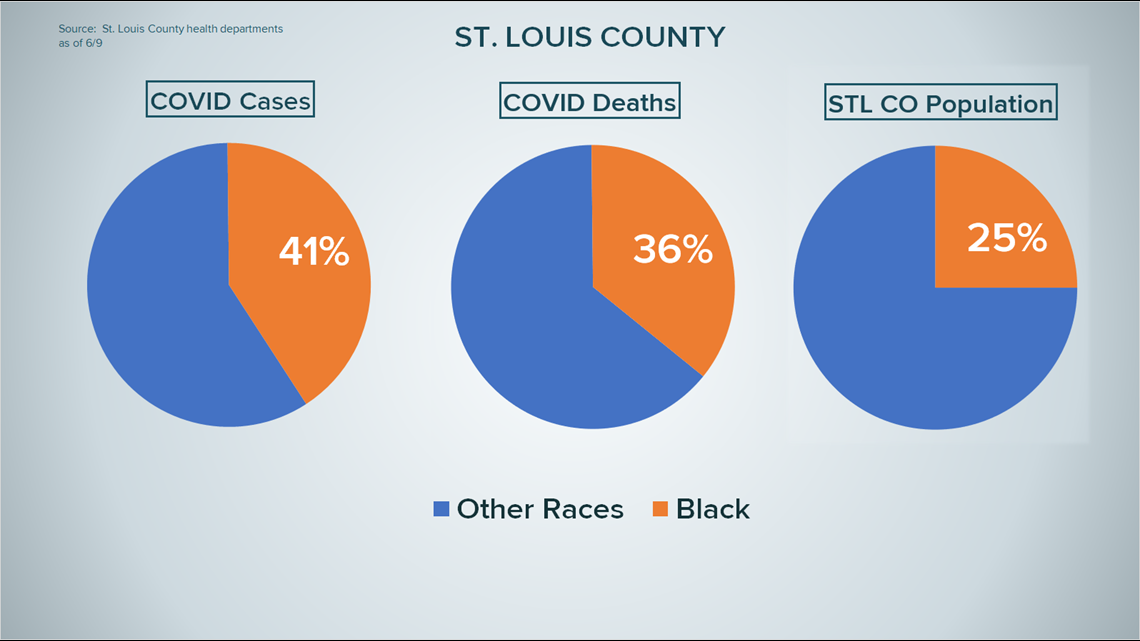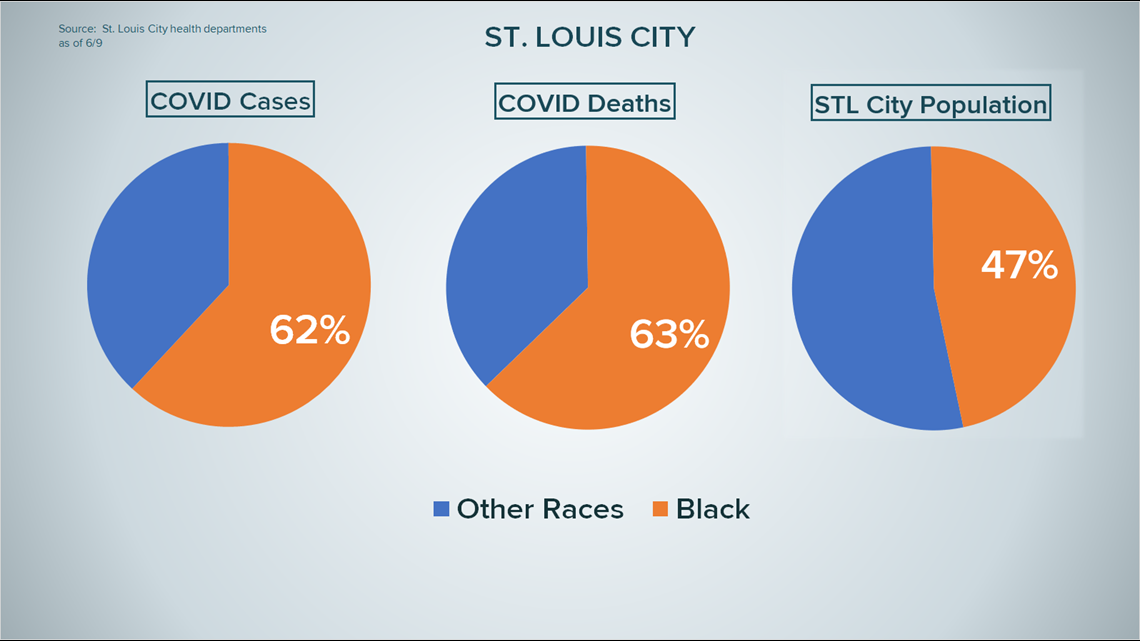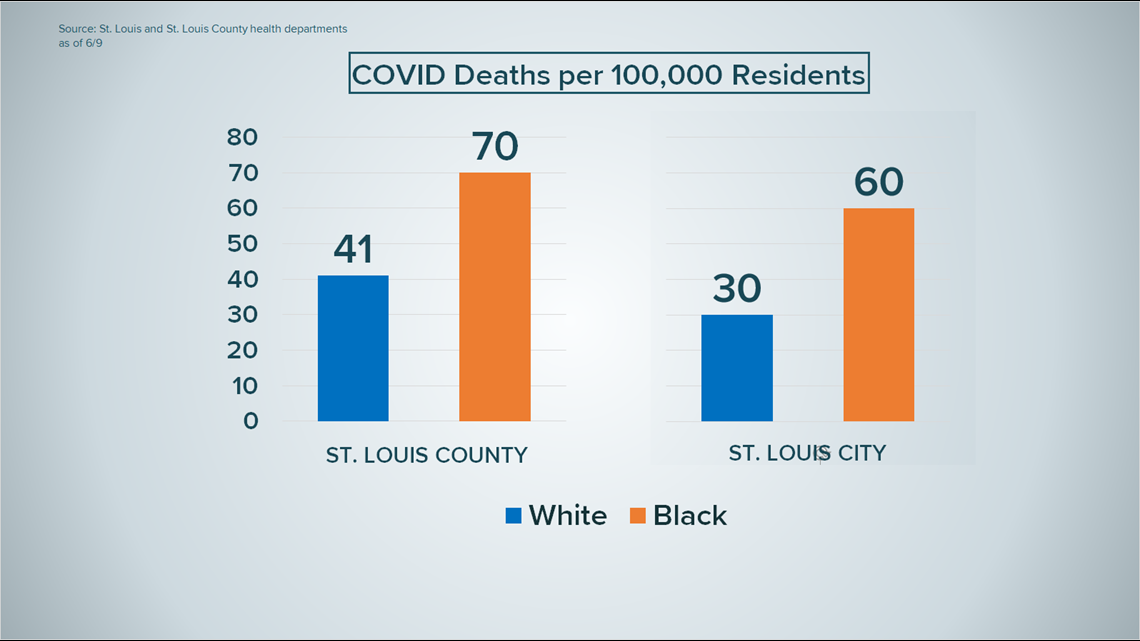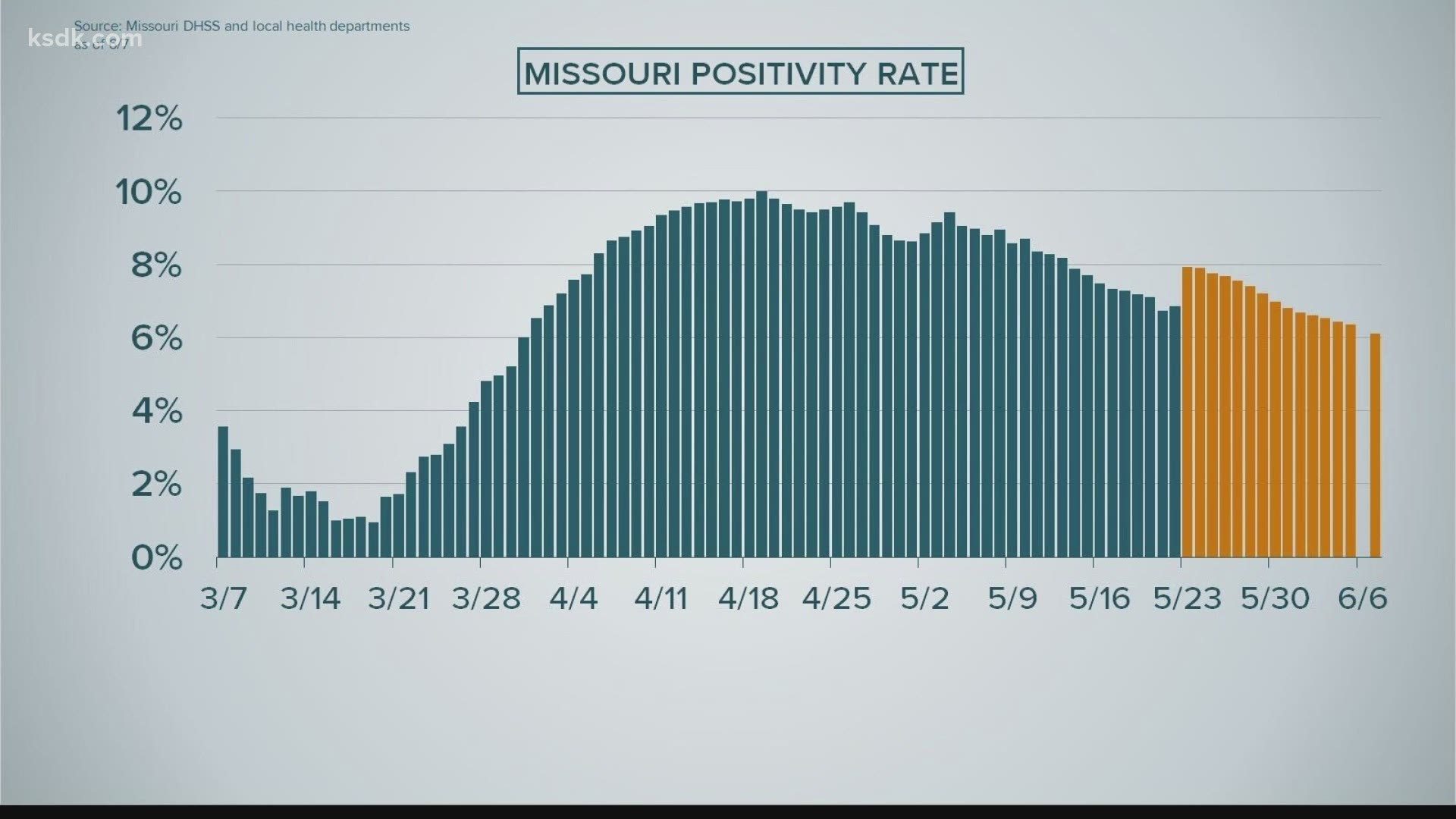ST. LOUIS — As COVID-19 data continues to pour in daily, the trend of African Americans being disproportionately impacted by the virus continues.
In Missouri, where black people make up only 12% of the population, African Americans account for 31% of COVID-19 cases.
5 On Your Side dug deeper into data for the City of St. Louis and St. Louis County and found a similar trend.
Out of all of the counties in the state, St. Louis County and the City of St. Louis, occupy the top two spots on the list of areas with the highest number of coronavirus cases.
In St. Louis County, where there are 5,345 cases, 41% of the people who were diagnosed are African American. They also account for 36% of the deaths. However, the county's population is only 25% black.


Similarly, 62% of the city's cases and 63% of the deaths are made up of black residents, while only 47% of the population is black.


The disproportionate impact can also be seen in looking at the total number of COVID-19 deaths per 100,000 people.
In the county, per 100,000 black residents, 70 died from the virus, while only 41 white residents died per 100,000. For the city, the 30 white residents per 100,000 doubles when looking at 60 black residents who died per 100,000 black people in the city.


This measure tells a broader story about the overall impact of COVID-19 in different communities in the county and city.
Dr. Alex Garza, incident commander of the St. Louis Metropolitan Pandemic Task Force, said there are multiple factors that contribute to these findings, including socioeconomic issues and lack of access to things like quality healthcare and healthy food options.
"Those populations also have a higher risk of being involved in a type of employment that's high-touch, high-risk as well," Dr. Garza said. "So, I want to make it clear, it's not the race itself. It's those communities and what impacts those communities."
However, all of these factors look at COVID-19 data through the lens of population. Mortality rate breaks down how many people recovered from the virus versus those who died out of everyone who contracted it.
In the county, the mortality rate for white COVID-19 patients is 8.2%, which is higher than the rate for black patients (6.5%). The same trend is playing out in the city where white COVID-19 patients experience a mortality rate of 15% compared to the black COVID-19 mortality rate of 7.9%.
So, what do all these numbers mean?
It means the trends are consistent in both the city and county. In both places, black people are more likely to contract the virus. However, white patients who have it are more likely to die from it.
However, while the survival rate is more favorable for black people with the virus, the data also shows that African Americans are over-represented when calculating the data because of the number of cases compared to the population.


